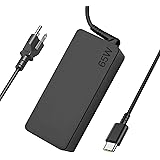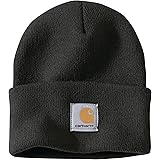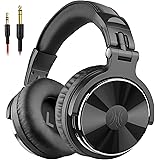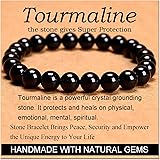Mini Mic Pro (Newest Model), Wireless Microphone for iPhone, iPad, Android, Lavalier Microphone for Video Recording - 2 Pack iPhone Mic Crystal Clear Recording with USB-C for Podcast Microphone, ASMR
$22.99 (as of February 12, 2025 12:50 GMT +00:00 - More infoProduct prices and availability are accurate as of the date/time indicated and are subject to change. Any price and availability information displayed on [relevant Amazon Site(s), as applicable] at the time of purchase will apply to the purchase of this product.)Replacement for Dell Laptop Charger,65W USB C Laptop Charger Compatible with Dell HP Lenovo Asus Acer Samsung Google Chromebook Type C Power Cord
$9.99 (as of February 12, 2025 12:50 GMT +00:00 - More infoProduct prices and availability are accurate as of the date/time indicated and are subject to change. Any price and availability information displayed on [relevant Amazon Site(s), as applicable] at the time of purchase will apply to the purchase of this product.)USB-C 65W 45W AC Replacement Charger fit for Lenovo ThinkPad T480 T490 T580 ADLX65YDC2A ADLX65YLC2D ADLX65YDC3A ADLX65YDC2D chromebook 2nd Gen S330 65W Laptop Power Supply Adapter Cord
$14.93 (as of February 12, 2025 12:50 GMT +00:00 - More infoProduct prices and availability are accurate as of the date/time indicated and are subject to change. Any price and availability information displayed on [relevant Amazon Site(s), as applicable] at the time of purchase will apply to the purchase of this product.)Amazon Fire TV Stick 4K Max (newest model), our most powerful 4K streaming stick with Wi-Fi 6E support, 16GB Storage, free and live tv
$44.99 (as of February 12, 2025 12:50 GMT +00:00 - More infoProduct prices and availability are accurate as of the date/time indicated and are subject to change. Any price and availability information displayed on [relevant Amazon Site(s), as applicable] at the time of purchase will apply to the purchase of this product.)Amazon Fire HD 10 Kids Pro tablet (newest model) ages 6-12. Bright 10.1" HD screen, includes ad-free content, robust parental controls, 13-hr battery and slim case for older kids, 32 GB, Happy Day
$139.99 (as of February 12, 2025 12:50 GMT +00:00 - More infoProduct prices and availability are accurate as of the date/time indicated and are subject to change. Any price and availability information displayed on [relevant Amazon Site(s), as applicable] at the time of purchase will apply to the purchase of this product.)For centuries, humans have relied on various forms of note-taking to record ideas, observations, and important information. From ancient scrolls to modern digital tools, the art of note-taking has undergone significant transformations. Among these tools, legal pads remain a popular choice for those seeking a tactile and versatile writing experience.
History of Legal Pads
The term “legal pad” originated in the late 19th century when lawyers began using specialized paper products designed specifically for taking notes during court proceedings or other official meetings. These early pads featured a grid pattern and were typically made from high-quality paper to ensure durability and readability.
Over time, legal pads evolved to cater to diverse user needs. Today, they come in various sizes, formats, and materials to suit different writing styles and preferences.
Types of Legal Pads
- Standard Size: The most common size for legal pads is 8.5 x 11 inches (21.59 x 27.94 cm), featuring a standard grid pattern with 50-100 sheets per pad.
- Executive Size: This larger format measures 8.5 x 13.5 inches (21.59 x 34.29 cm) and often includes more sheets, typically 80-120 per pad.
- Mini or Pocket Size: Ideal for carrying in a pocket or purse, these smaller pads measure around 4 x 6 inches (10.16 x 15.24 cm) with 20-50 sheets.
- Specialty Pads: Some legal pads cater to specific needs, such as graph paper for technical drawings, music notation, or even dot-grid paper for artistic expression.
Materials and Quality
Legal pads are available in various materials, including:
- Paper Weight: From standard 20-24 lb (75-90 gsm) to heavier 32-40 lb (120-150 gsm) options.
- Pulp Composition: Some legal pads feature recycled or sustainable paper sources.
- Finish and Texture: Smooth, textured, or even linen-finish options are available for added comfort.
Benefits of Using Legal Pads
- Tactile Experience: Writing on a physical pad allows for better retention and understanding of information.
- Creative Freedom: The tactile experience enables users to brainstorm and sketch ideas more freely.
- Portability: Legal pads are lightweight, making them easy to carry in a bag or backpack.
Comparison with Digital Tools
While digital note-taking tools offer numerous benefits, such as organization and accessibility, some users prefer the traditional feel of writing on paper. Key advantages of legal pads include:
- No Distractions: Without notifications or social media temptations, users can focus on their notes.
- Better Retention: Studies have shown that writing information down by hand leads to improved retention and recall.
Conclusion
In conclusion, legal pads continue to be a valuable tool for note-taking, offering a unique blend of versatility, portability, and tactile experience. Whether you’re a student, professional, or simply someone who enjoys writing, a high-quality legal pad can be an indispensable companion in your daily life.
Tips for Choosing the Perfect Legal Pad
- Consider Your Needs: Choose a size and format that suits your specific needs.
- Material Matters: Select a pad with paper weight and finish suitable for your writing style.
- Quality Over Price: Invest in a reputable brand offering high-quality materials and durability.
Technical Specifications:
- Size options: Standard (8.5 x 11 inches), Executive (8.5 x 13.5 inches), Mini (4 x 6 inches)
- Paper weight: 20-40 lb (75-150 gsm)
- Pulp composition: Recycled or sustainable materials available
- Finish and texture options: Smooth, textured, linen-finish













